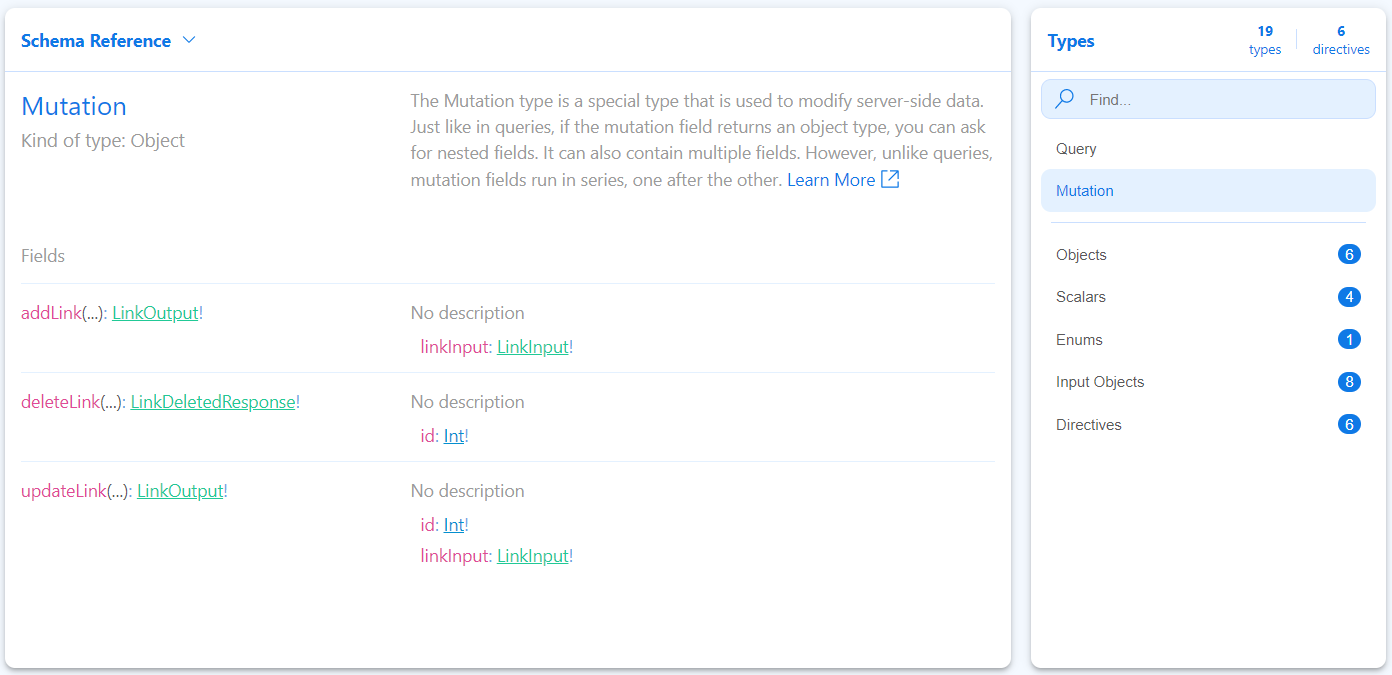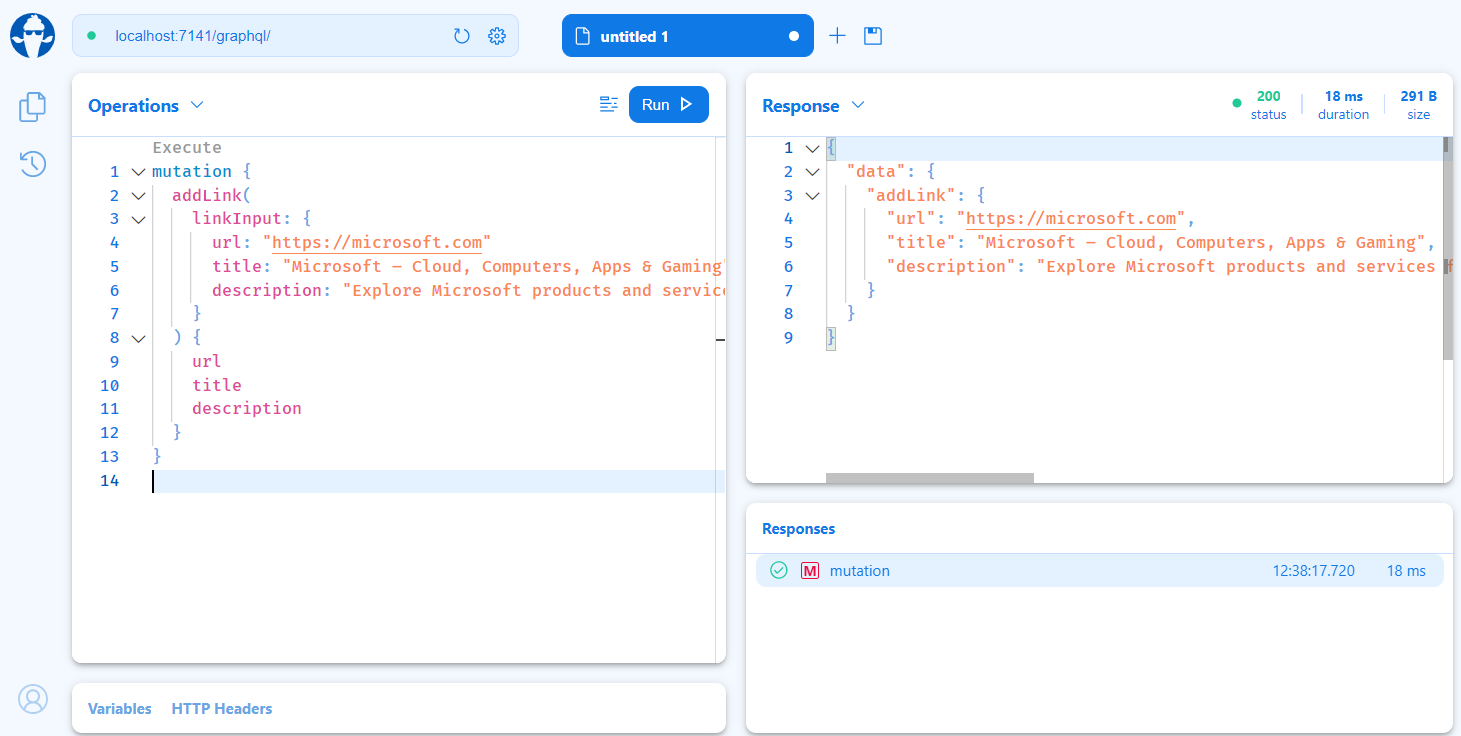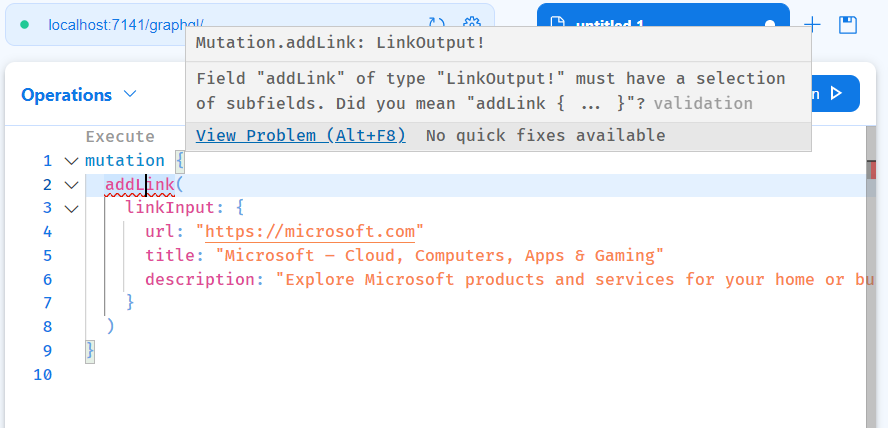GraphQL Mutations in ASP.NET Core
November 27, 2021 by Anuraj
AspNetCore GraphQL DotNet6 EFCore
This post is about GraphQL in ASP.NET Core with EF Core. In this post we will explore how to implement mutations using ASP.NET Core. Mutations help you to update the data in the database. Here is the Mutation class. In this class, we are adding the link object to database using Entity Framework Core.
public class Mutation
{
[UseDbContext(typeof(BookmarkDbContext))]
public async Task<LinkOutput> AddLink(LinkInput linkInput,
[ScopedService] BookmarkDbContext bookmarkDbContext)
{
if (string.IsNullOrEmpty(linkInput.Url))
{
throw new ArgumentNullException(nameof(linkInput.Url));
}
var link = new Link
{
Url = linkInput.Url,
Title = linkInput.Title,
Description = linkInput.Description,
ImageUrl = linkInput.ImageUrl,
CreatedOn = DateTime.UtcNow
};
bookmarkDbContext.Links.Add(link);
await bookmarkDbContext.SaveChangesAsync();
return new LinkOutput(true, link.Id, link.Url,
link.Title, link.Description, link.ImageUrl, link.CreatedOn);
}
}Next, we need to configure the Mutation class to the GraphQL pipeline like this.
builder.Services.AddGraphQLServer()
.AddQueryType<Query>()
.AddProjections()
.AddFiltering()
.AddSorting()
.AddMutationType<Mutation>();You can use the following code to implement update operation as well.
[UseDbContext(typeof(BookmarkDbContext))]
public async Task<LinkOutput> UpdateLink(int id, LinkInput linkInput,
[ScopedService] BookmarkDbContext bookmarkDbContext)
{
var link = bookmarkDbContext.Links.Find(id);
if (link != null)
{
if (link.Title != linkInput.Title)
{
link.Title = linkInput.Title;
}
if (link.Description != linkInput.Description)
{
link.Description = linkInput.Description;
}
if (link.ImageUrl != linkInput.ImageUrl)
{
link.ImageUrl = linkInput.ImageUrl;
}
if (link.Url != linkInput.Url)
{
link.Url = linkInput.Url;
}
await bookmarkDbContext.SaveChangesAsync();
return new LinkOutput(true, link.Id, link.Url, link.Title,
link.Description, link.ImageUrl, link.CreatedOn);
}
return new LinkOutput(false, null, null, null, null, null, null);
}And you can get the schema and know about the Mutation operations in GraphQL from Schema Reference.

You can execute the mutation operation like this.
mutation {
addLink(
linkInput: {
url: "https://microsoft.com"
title: "Microsoft – Cloud, Computers, Apps & Gaming"
description: "Explore Microsoft products and services for your home or business."
}
) {
url
title
description
}
}Once it execute the operation and then it return the Url, title and description, like this.

If you’re not specifying the return object, GraphQL will show an error like this.

Mutation will help you to alters data, like inserting data into a database or altering data already in a database.
You can find the source code in GitHub
Happy Programming :)
Found this useful? Share it with your network!
Copyright © 2025 Anuraj. Blog content licensed under the Creative Commons CC BY 2.5 | Unless otherwise stated or granted, code samples licensed under the MIT license. This is a personal blog. The opinions expressed here represent my own and not those of my employer. Powered by Jekyll. Hosted with ❤ by GitHub
